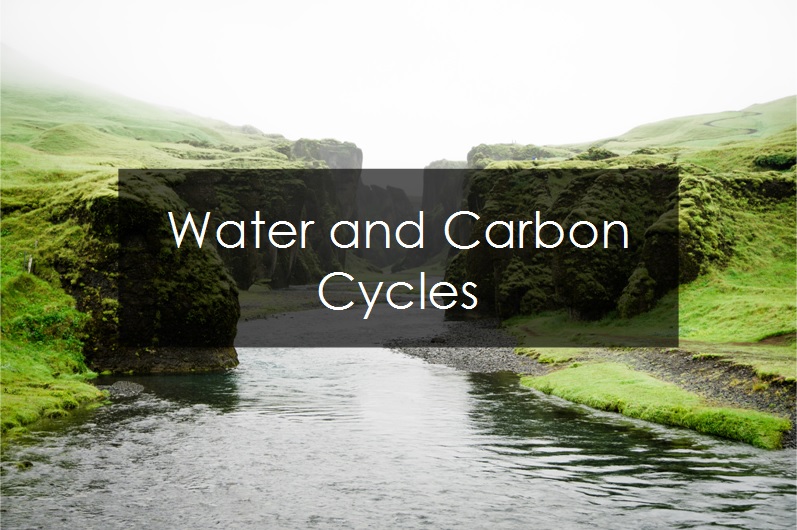Goulsbra, C. (2023) ‘Updates: water and carbon update: feedback loops in the climate system’, Geography Review, 36 (3), pp.16-19.
Variations in solar radiation and anthropogenic greenhouse gas emissions can change our climate, but climate feedback mechanisms can have an even greater impact than initial forcings.
Holmes, D. (2023) ‘Making the grade: geographical skills: measuring components of the water cycle’, Geography Review, 36 (3), pp.6-9.
Tips and support for conducting A-level fieldwork on a local water cycle.
Goulsbra, C. (2022) ‘Water and carbon update: groundwater abstraction’, Geography Review, 36 (1), pp.31-33.
Much of the world’s population relies on groundwater supplies, in both developed and developing countries. Careful management is critical to ensure sustainable use.
Holden, J. (2022) ‘The role of macropores in the water and carbon cycles’, Geography, 36 (1), pp.8-12.
In this article we examine fast flow paths in the soil known as macropores.
Goulsbra, C. (2021) ‘Updates: water and carbon update: how do farming practices affect our waterways?’, Geography Review, 34 (3), pp.6-9.
Farming practices are one of the important impacts on the water cycle. As farming changes to feed a growing population, what does this mean for water quality, ecology and flood risk?
Styles, J. (2021) ‘New horizons: the big picture: peat or trees?’, Geography Review, 34 (4), p.4.
The image in this article, taken in June 2020, shows ploughing of peatland soils in Cumbria in preparation for tree planting. The highly organic soil, which is an important carbon store, is exposed and the distinctive peatland habitat is significantly modified. This article links to your unit on Water and Carbon Cycles.
Woodward, J. (2021) ‘New horizons: centrepiece: the Keeling Curve and the carbon cycle’, Geography Review, 34 (4), pp.20-21.
Carbon dioxide measurements have been taken at one observatory every day since 1958. What do these data tell us about carbon emissions over time and across the seasons? This article links to your unit on Water and Carbon Cycles.
Woodward, J. (2021) ‘New horizons: centrepiece: the River Nile flood cycle’, Geography Review, 34 (3), pp.20-21.
What is the role of its drainage basin and the global climate system in the annual flooding of the Nile?
Goulsbra, C. (2020) ‘Updates: water and carbon update: where does carbon in rivers end up?’, Geography Review, 33 (3), pp.10-11.
Carbon in rivers and streams can be deposited as a carbon store, or processed and released as a greenhouse gas. Our second Carbon Update on carbon in rivers shows how these processes operate – and their significance for climate change.
Goulsbra, C. (2020) ‘Water and carbon update: the water balance’, Geography Review, 34 (1), pp.25-27.
The water balance is part of the water cycle. It shows how the availability of water in a drainage basin changes according to the season. In this column Claire Goulsbra looks at the inputs, outputs and processes that occur in river catchments, and how they interact to create this balance.
Scott, K. (2020) ‘New horizons: centrepiece: reducing the UK’s carbon footprint’, Geography Review, 33 (3), pp.20-21.
How much of the UK’s contribution to greenhouse-gas emissions is made in other countries, and how can you as an individual help to reduce this?
Spooner, P. (2020) ‘Ocean currents, the carbon cycle and climate change’, Geography Review, 33 (3), pp.22-25.
Ocean currents are a key component of both the carbon cycle and the way that heat is transported around the Earth. This article looks at the relationship between ocean currents and climate, and how the changes in one affect the other.
Burt, T. (2018) ‘Water and carbon cycles in the UK’s peatlands’, Geography Review, 31 (3), pp.24-28.
The UK’s upland peat moors are an important carbon store. This article uses a case study from the Pennines to explain how drainage-basin hydrology plays a critical role in the carbon cycle, transporting carbon as well as water from land to sea. To preserve peat as a carbon store we need to understand this relationship between hydrology and carbon export.


